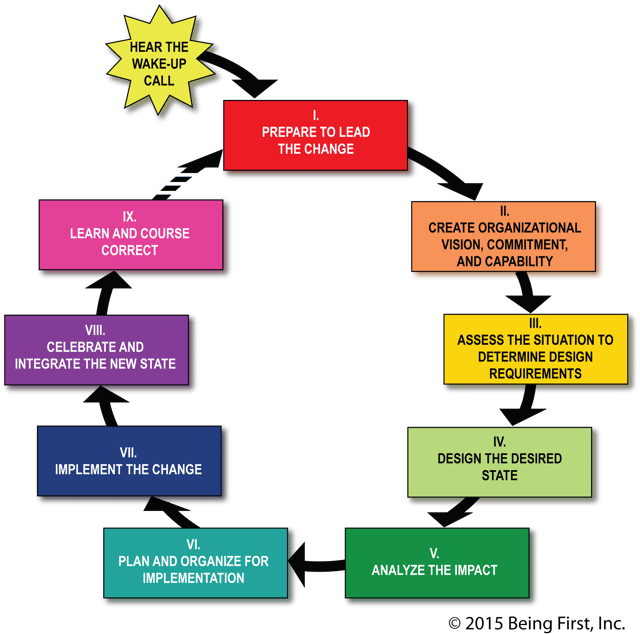Many change initiatives struggle because multiple organizational change models and tools are at play simultaneously. Most organizations have invested in several ways of supporting change initiatives, including project management, change management, The Change Curve, Prosci, Continuous Improvement, Agile, and Lean Six Sigma.
The Problems Multiple Organizational Change Models Can Create
Any of these tools and models for organizational change can add value. The key is understanding how and when to use each of them during your change initiative, and which aspects of a change initiative they address. Without this understanding, you may end up throwing spaghetti at the wall, creating redundant work or missing key elements of your change process. This can lead to:
- Confusion about authority and decision making
- Confusion on the criteria for the solution
- Lack of awareness of the impact on the organization
- Competition among project team members
- Arguments about which tools to use
- Communication breakdowns
- Timeline issues that negatively impact the project
- Confusion about how to organize and pace the work of the change initiative
- Lack of clarity in what to monitor for
- Confusion about what to do with the analytics data
- Work slowdown or stoppage. And many redo’s!
Why Use an Integrated Organizational Change Model?
It is crucial to have an Integrated Organizational Change Model to manage how all your models and tools work together. An integrated organizational change model is not a replacement of project management or change management. It is a methodology that can be used by the change leaders to design the best and most efficient process for their change initiatives. You can use the integrated model of organizational change to determine how to best use any of the other models and tools you already have in your organization, but doing so in a way that serves the full needs of your overarching change process.
Properly using all your change tools and models together will allow you to accomplish the full set of requirements for a successful change initiative. For example, an integrated organizational change model can ensure you will be able to:
- Create a clear case for change
- Determine an accurate scope of change
- Determine a realistic timeline based on the actual work required and capacity available
- Determine a realistic budget
- Get leadership and team alignment on the desired outcomes
- Engage your stakeholders so they can contribute their best thinking before a solution is determined
- Set up clear change governance roles and accountabilities for the life of the project, from start to full achievement of results (including engaged sponsors, change leaders, and teams)
- Create a process to generate the best change solution
- Map the various work streams and change initiatives required to get all of the work done in an organized way, including both content solutions and human and cultural changes required
- Create strategies to integrate the work across work streams or parts of the organization so that your change is streamlined and cost-effective
- Build a strategy to minimize the negative impact on people and assess the fit of the organization’s current culture to the future reality being implemented
- Ensure that your executives, change sponsors and leaders understand your process so they can better understand the work required of them and their organizations
- Ensure that leaders know who to call on for what (and when) in the lifecycle of the change initiative
- Ensure full adoption, training, fine-tuning and sustained results
And the list goes on.
Which of your organizational change models attends to each of these? How well do they do it? Would your leaders know who to call on, and when in the life of a change initiative, to get each of these pieces of change work done? These are big questions. In a future blog, we will explore some answers to these questions and how an integrated organizational change model can pull all of your change work together for optimal execution.
You can read more about our Change Leader's Roadmap (CLR) in our book, The Change Leader's Roadmap: How to Navigate Your Organization's Transformation. Get the book here to learn more about the CLR model below and more.



